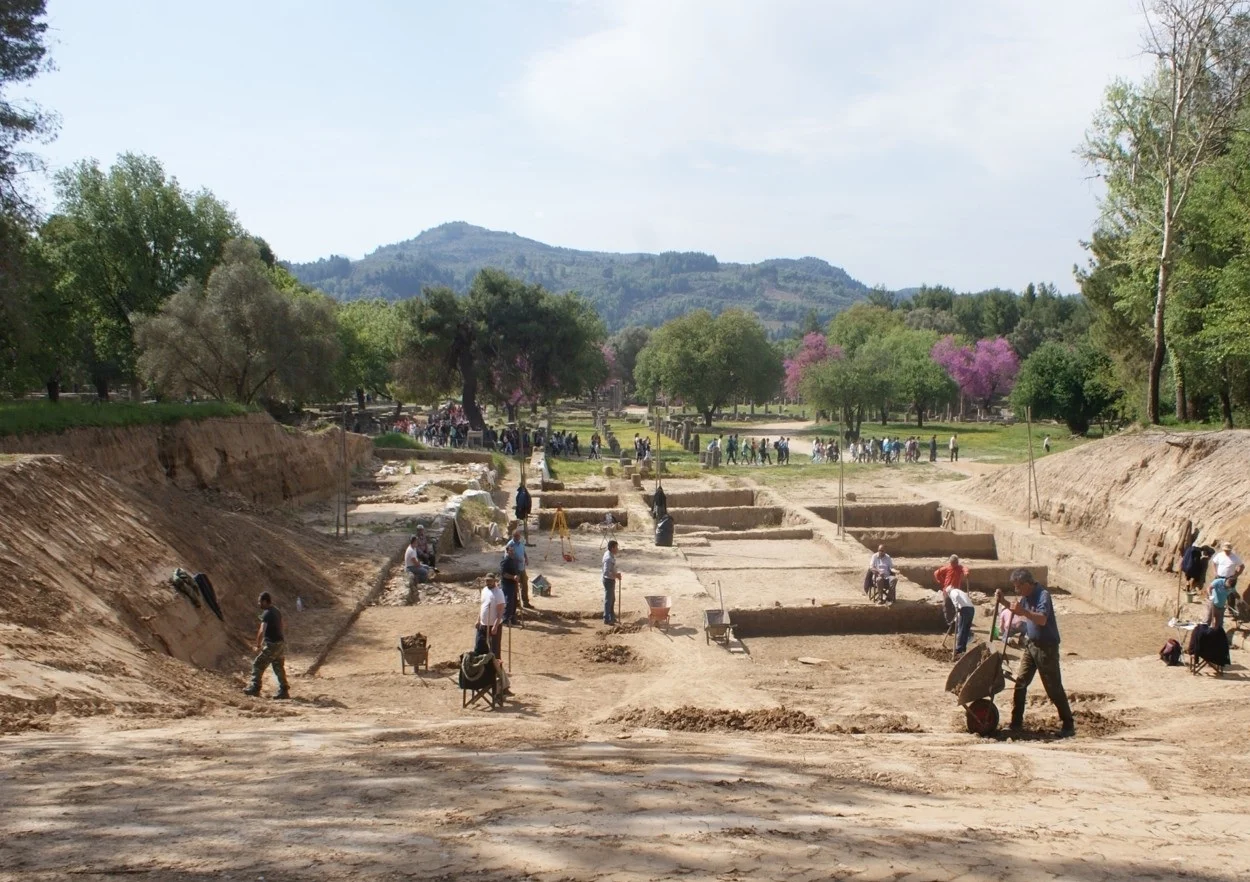Olympia is the traditional home and birthplace of the Ancient Olympic Games, a series of athletic competitions held on the Peloponnese peninsula, Greece.
Not to be confused with the Modern Olympic Games, the Ancient Olympic Games took place every four years throughout Classical antiquity, from the 8th century BC to the 4th century AD.
In Ancient Greece, the games became a political tool during the Olympic truce, a peaceful declaration to ensure the host city-state was not attacked and to enable Olympians and pilgrims to safely travel.
Over time, the Ancient Olympic Games gained increasing recognition and became part of the Panhellenic Games, a series of religious festivals and games to honour gods from the Ancient Greek pantheon.
Despite Ancient Greece being annexed by the expanding Roman Republic, the games continued to be celebrated into the Imperial Era, with the last documented evidence of the games taking place under Theodosius I in AD 393.
Archaeologists from the Ministry of Culture have recently conducted excavations of Olympia’s Gymnasium, a 2nd century construction located in the same complex as the palaestra (wrestling grounds).
According to the researchers, the Gymnasium is an enclosed oblong shaped building centred on a courtyard with Doric arcades on its four sides. It served as a training facility for Olympians and a venue for socialising and engaging in intellectual pursuits.
The western section of the Gymnasium, which researchers believe housed competing athletes, has been destroyed by erosion caused by the river Kladeos. In the eastern portico there is an outer wall with a double inner Doric colonnade of 66 columns, and towards the courtyard there is another colonnade of 60 columns.
“The total length of this portico was equal to the length of the Olympic stadium, so that the athletes trained exactly the same distance. In the eastern portico there is a track for the training of runners, the length of which was equal to the length of a stadium (192.27 metres),” said the Ministry of Culture.
Header Image Credit : Ministry of Culture
Sources : Ministry of Culture





